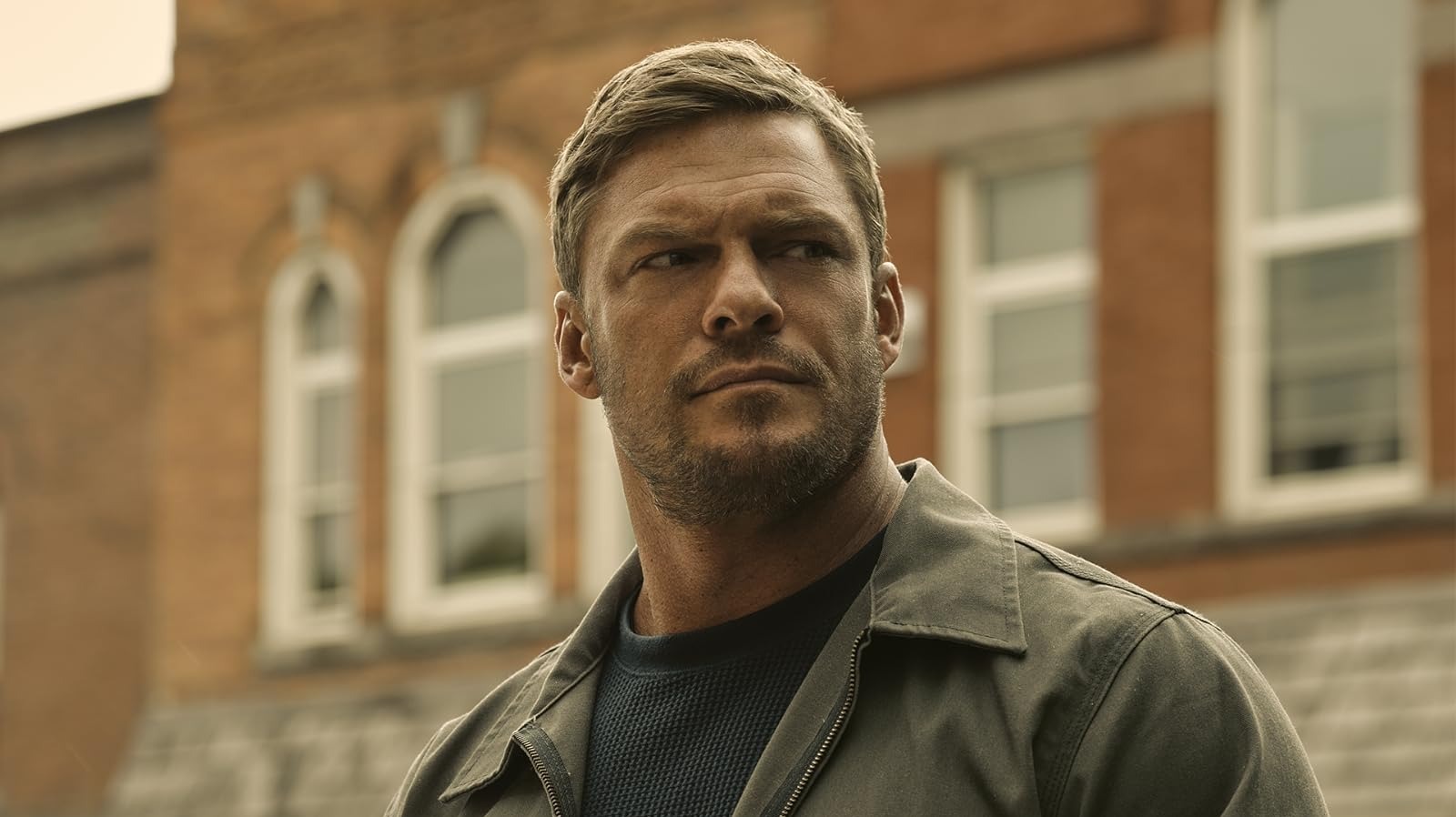Showrunner Nick Santora had grand plans for “Reacher” season 1. After Alan Ritchson was forged, following some hesitation on Amazon’s half, Santora was able to shoot his adaptation of Lee Kid’s first Jack Reacher ebook, “Killing Flooring,” on-location in Georgia. This might enable him and his crew to depict, as authentically as potential, the fictional Peach state city of Margrave, which performs host to Reacher all through “Killing Flooring.” Sadly, the worldwide pandemic hit simply forward of filming, forcing Santora and co. to rethink their plan.
Relatively than shoot on-location, the manufacturing shifted north, constructing the complete city of Margrave in a cornfield in Canada. The end result was an undeniably spectacular set that was, in keeping with The Hollywood Reporter, the most important in Canada. Erected in Pickering, Ontario, the set lined 23 acres and featured 30 shops and retailers. It additionally allowed the manufacturing to shoot in a distant location and preserve the danger of COVID infections low. All in all, then, it appeared like the proper answer.
However one unexpected concern with this fabricated city was not solely that “Reacher” season 1 felt smaller than it in any other case would have — a typical concern with tasks shot in the course of the pandemic — however that the environs of Margrave had this synthetic really feel which appeared conspicuously at odds with the in any other case gritty and infrequently brutal tone of the present. Ritchson unintentionally hit on the issue when he informed IMDb that driving onto the set felt like coming into “Pleasantville.” When you may assume the manicured environs of this fabricated Margrave may need offered a pleasant distinction to the present’s savage combat scenes and hard-edged crime thriller sensibility, it in the end simply got here throughout as what it was — inauthentic. Which, for a present that was lastly giving us a supposedly genuine Reacher, simply felt unsuitable.

